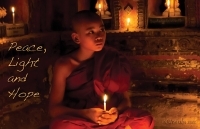.jpg)
Roasting Mustard Seed
In the medieval Newari town of Khokana – just south of Kathmandu, Nepal – mustard oil is produced in the traditional way.
The terraced fields of the Kathmandu Valley were bright green and yellow with blooming mustard plants the last time I visited (see: People of the Rice Bowl).
I couldn’t help but wonder what it was all being used for! I’ve always thought of mustard as a condiment, designed to add piquancy to an Austrian/Slovenian Kransky and sauerkraut, English bangers and mash, or an American hot dog. What I didn’t realise, until I mistook Australian fields of canola for mustard, was that the plants are related, and both are grown to produce cooking oils.
I find it fascinating to see how food gets from the fields to our tables. So, I was pleased to learn that – as part of a photographic workshop in Nepal with Jack Kurtz (sadly, now deceased) and Gavin Gough – we were visiting the historic Newar village of Khokana, 8 kilometres (5 miles) south of the capital Kathmandu. For centuries, Khokana was the centre of mustard production and oil extraction, and the name is still synonymous with the most sought-after cooking oil in Nepal (e.g.: OnlineKhabar Khokana).
But, even in these small villages, times have changed.
Today, less mustard is grown in the surrounding local fields; with the ever-expanding population in nearby Kathmandu, there is more profit in fresh vegetables. Most of the locally-grown seed is used by the farmers themselves, and commercial oil production requires seed imported from other regions, and from India, Australia, and further afield. Only two workshops using the traditional Newari methods remain in Khokana: one is a community-owned collective, and the other is the private enterprise that we visited.
Photographing inside the factory was challenging! It was hot and dark and noisy, with small streaks of sunlight sneaking in at odd angles. The few workers employed there were busy, and the sorts of Occupational Health and Safety Regulations we take for granted in the West were absent, making it pretty important to watch where you put your feet. And, there were a few of us, so we had to take turns staying out of each other’s way.
Because various stages in the process were happening at the same time, it took me a while to figure out the actual sequence of production. Even so, I have left the pictures roughly in the order in which they were taken, rather than sorting them according to method.
I love these naturalistic peeks into the everyday lives of other people, and I hope you enjoy them too. Join me on the factory floor:
.jpg)
Mustard Factory
The brick and wood factory floor is rough hewn and crowded. Many oil mills in this region were damaged by the 2015 earthquake; I don’t know if this one was, but prior to that, it was closed for thirty years before being re-opened by the current owner (see: Khokana’s Famed Tori-Ko-Tel).
.jpg)
Shovel in the Seed
Today, the seeds that go into making traditional mustard oil are sourced from India, or further.

Roasting the Seed
One of the first steps in the process is roasting the mustard seeds.

Funky Worker
This young man – an employee of the mustard-oil factory – had/has an eye condition, and was, therefore, wearing his sunglasses in the dark factory interior.

Newari Woman
Given this woman’s proprietorial air within the factory, I assume she was part of the organisation.

Khokana Gabu Jaaysha
Those woven sleeves are what the roasted seed goes into before being manually pressed.

Oil Can
Around the factory floor there are interesting colours and shapes.

Oil Expeller
Yes, that is what it is called! This electric press is used last, when no more oil can be extracted mechanically. This second pressing is considered lower grade, and is used as a massage oil.

Shovelling Seed
Seed is shovelled into wicker baskets to be ground up.

Still Life Found

Pouring Seed

Newari Press
The traditional Newari mustard press is unique: the metal sleeve containing roasted seed is placed between two huge wooden beams …

Spinning the Press
… and these are squeezed tight by turning a wooden wheel.

Straining the Fresh-Pressed Oil
This valuable first pressing is collected below …

Bottled Oil
… and bottled for sale as premium cooking oil.

Old Machinery
The first step in the process is to grind the seed before roasting it.

Seed-Fall
I was mesmerised by the flow of seed coming out of the grinding machine.

Old Machine
Like all the other machinery in the factory, this unit looks old and heavy-duty.

Quality Control

Tending the Roaster
Each step of the process was repeated multiple times: several batches of seed were roasted while we watched.

Pounding Fibre
When all the oil has been extracted from the seeds, the remaining cake is broken up and sold as animal feed or compost.

Pride
The workers loved sharing their time with us, and showing off the age-old traditions. Tourism – local and international – helps offset the increased costs of producing oil in this traditional manner.
Naturally, I couldn’t leave without buying some oil to take away: a couple of large bottles for our hostess, and some smaller ones to take home with me.
I’m still enjoying them!
 Until next time,
Until next time,
Namaste!
Pictures: 15March2017



























.png)
.jpg)

